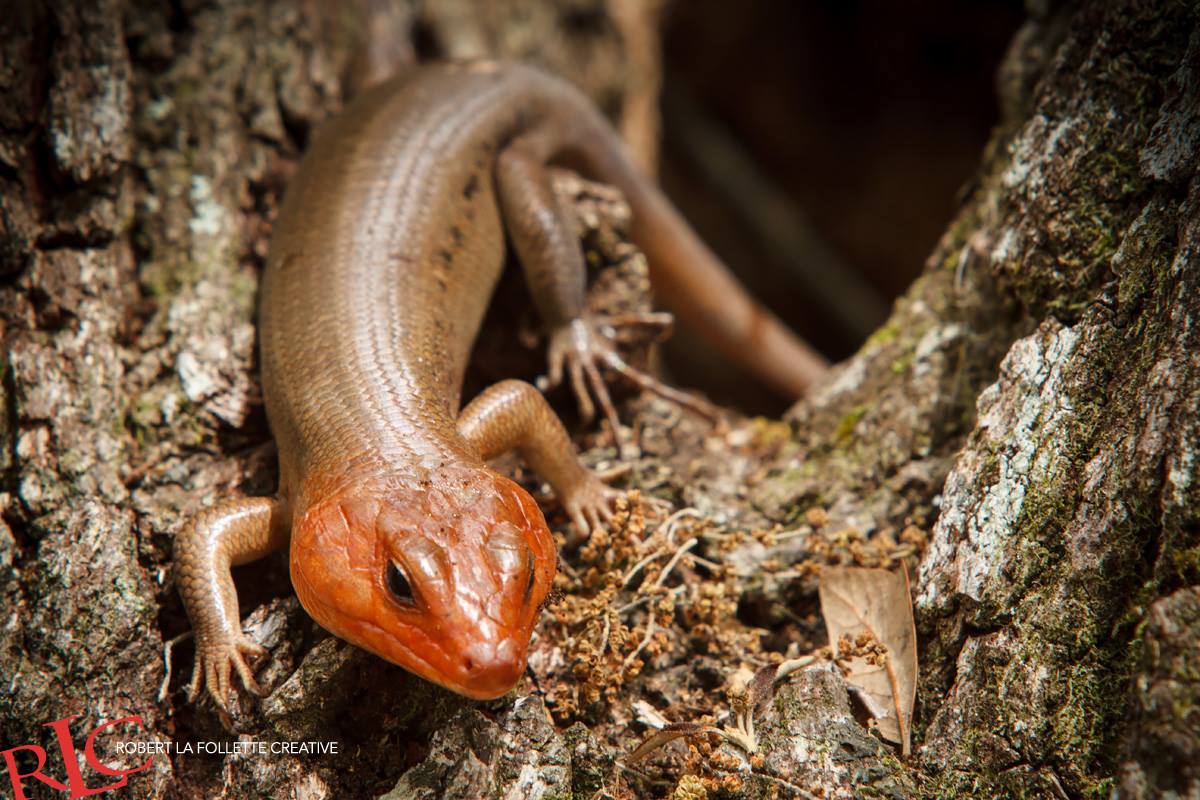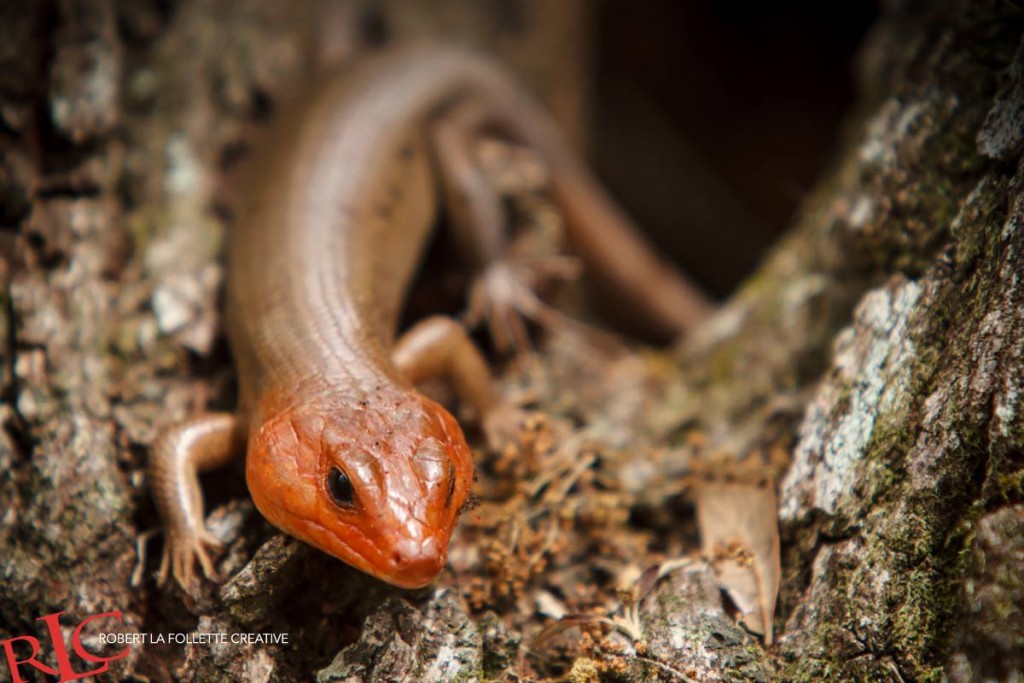So one of the more commonly misunderstood techniques is what to set your aperture when using a telephoto lens. More often then not, I always use a wide-open aperture or simply put, the lowest aperture my lens will go when using a telephoto lens (which is usually my 70-200mm or 400mm lens).
However, there will be times when using a wide-open aperture is not ideal and can greatly effect your subject. So now while most of us want to isolate our subjects from their background which is why we want to use a wide-open aperture plus throw in the fact the longer the lens is equals the further the subject is which equals that a wide-open aperture is totally acceptable and highly desired to give us an isolated subject and throw the background out of focus, the time when it becomes not desired is when photographing smaller subjects up close.
Case in point is take a look at the two images below of a Broad-headed Skink I found that was sunning itself on the branch of a tree. Now luckily for me he was at eye level with me which allowed me to to get really close. I used my 70-200mm lens with a 1.4X teleconverter which approximately gives me 280mm when zoomed out.
My distance was maybe 4 feet at best so I was fairly close so I could fill the frame with that telephoto lens. Once I framed the Broad-headed Skink now my choice was what aperture do I want to use? In those 2 images, you can clearly see a pretty big difference in the depth of field since I simply placed my focus point on the tip of his nose since that was the closest point to me and took 2 images. The first image the distance from the tip of his nose back the sharpness falls off pretty quick, which I used F/4 as my selected aperture.
Then I simply changed my aperture on the very next image to F/11 and you now can clearly see much more detail from the tip of his nose back along his body. So this for me was clearly a much more appealing image as you can see much more detail then the one taken at F/4.
Now of course I could of gone even higher to perhaps F/22 which would in turn doubled my depth of field to give me even more details but I settled on F/11 to give a nice balance of detail and depth. So the next time you find yourself with an eager subject, play around with your aperture so you can clearly see how it changes the appearance and perhaps even the mood of your subject.


-BPSOP Instructor: Robert La Follette
Robert Teaches:










